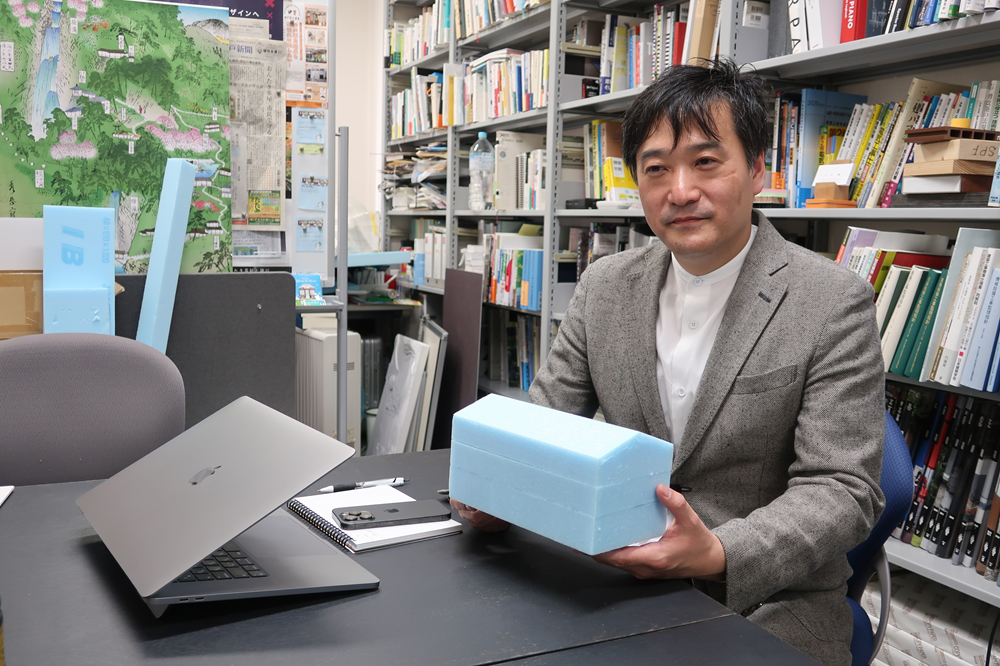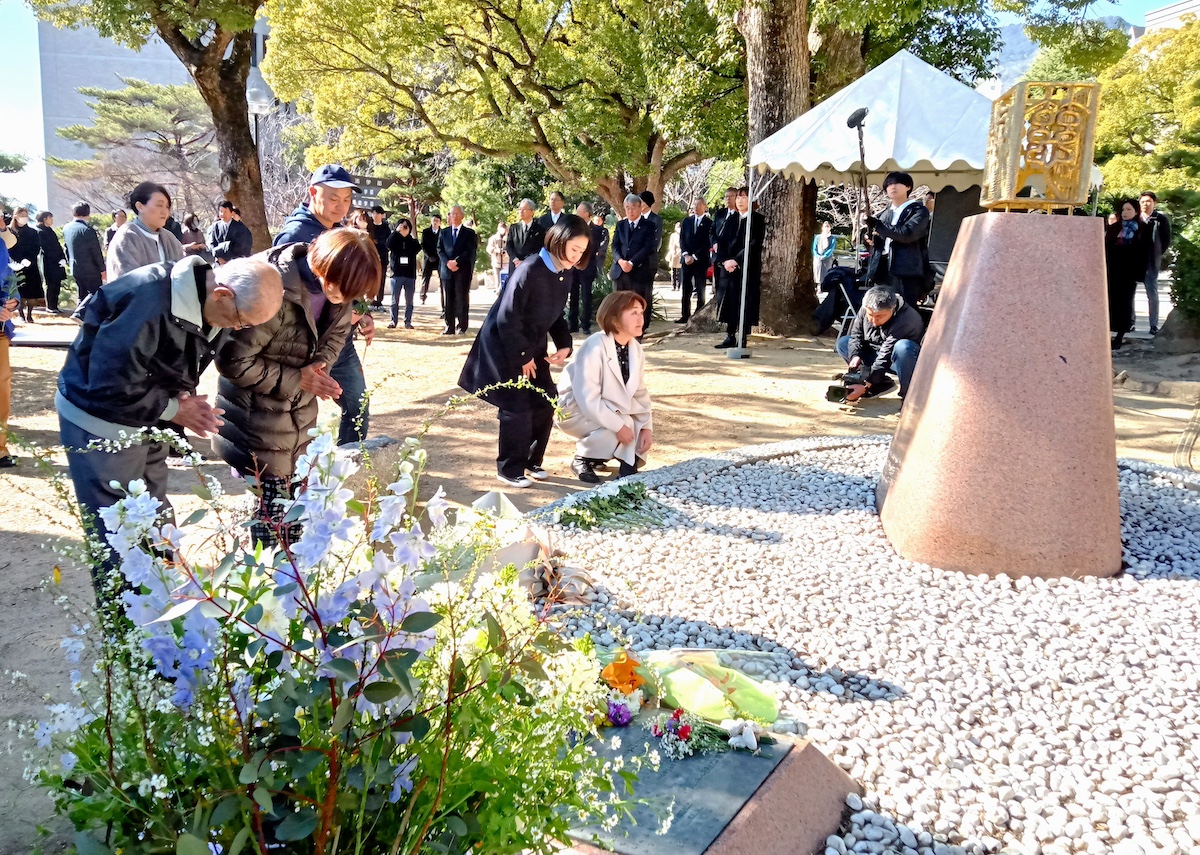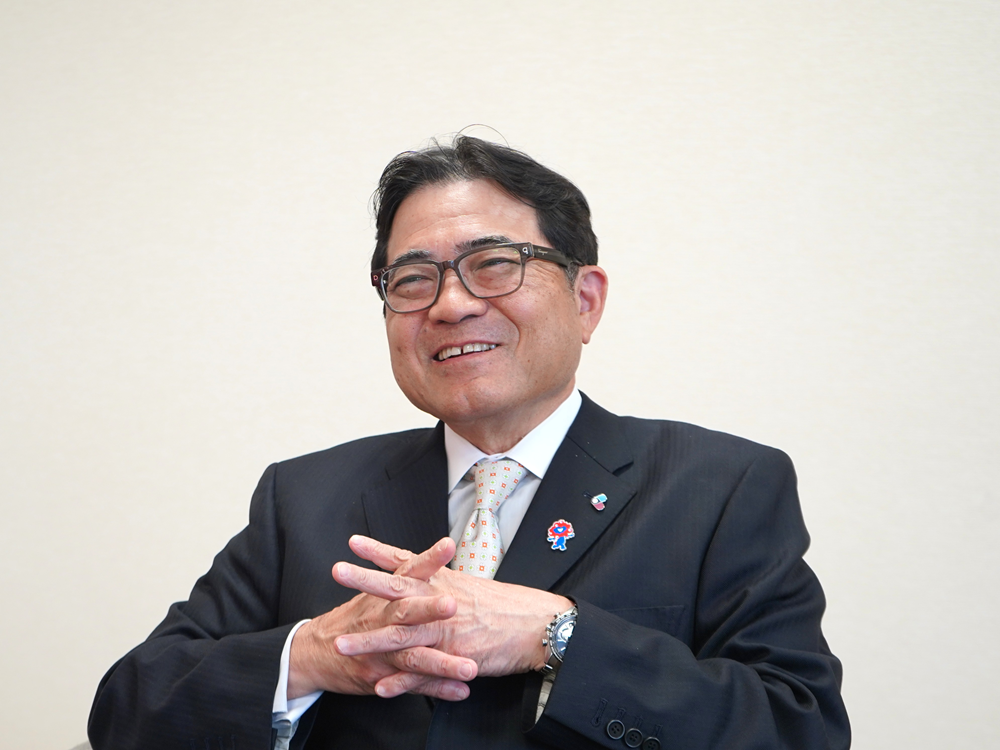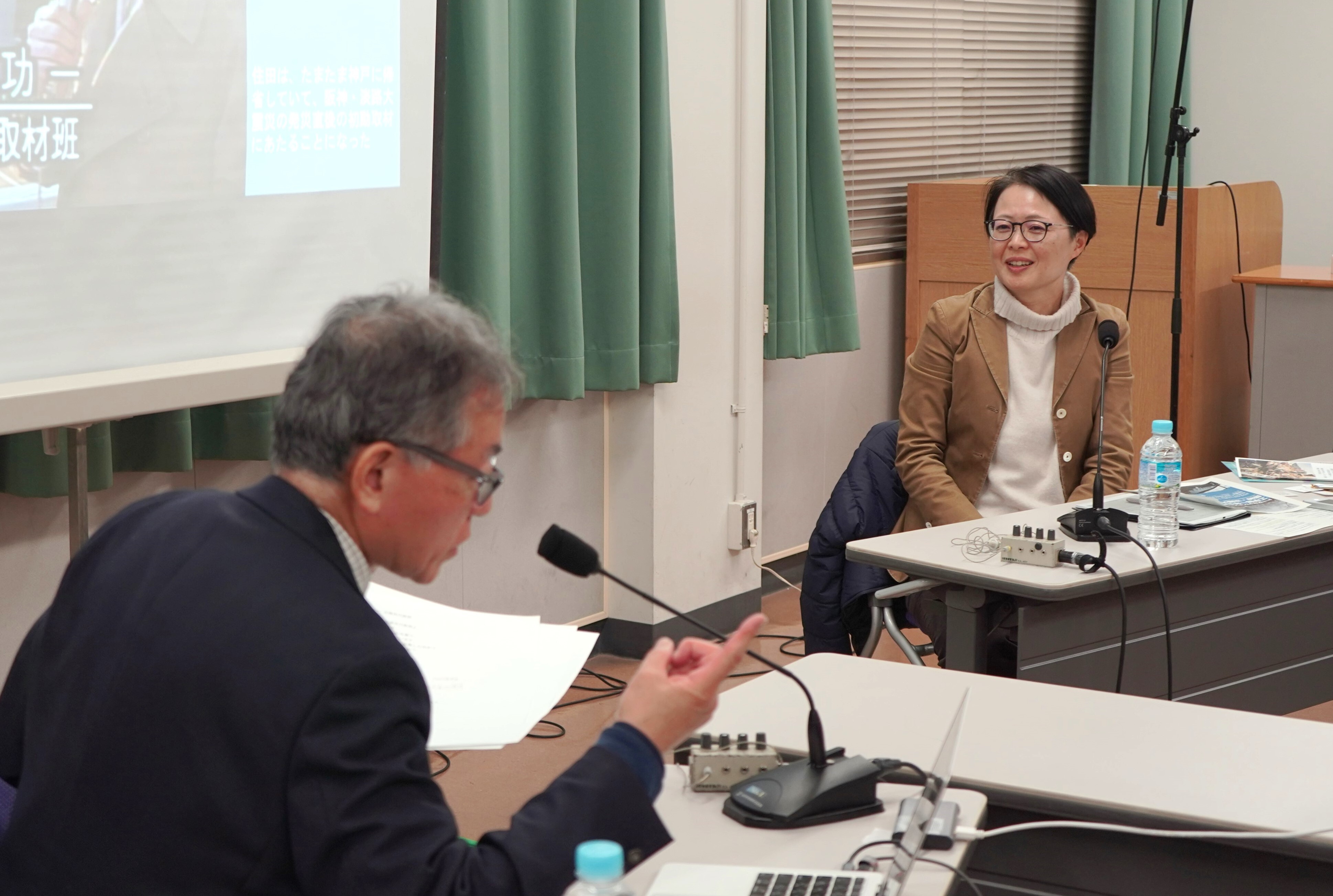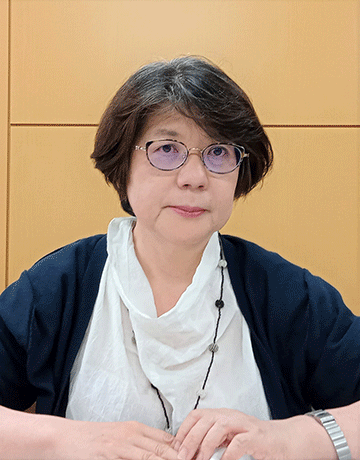
As the War in Ukraine drags on, Japan marks 78 years since the end of World War II. While tragedies are being repeated around the world, the generation that experienced the Pacific War is dwindling, and the inheritance of memories and records is becoming increasingly important. The city of Kobe was burned to the ground in massive air raids, and each of Kobe University’s predecessor schools was severely damaged. What was happening in Kobe during the wartime and postwar confusion? We asked Professor OSA Shizue of the Graduate School of Intercultural Studies, who specializes in modern and contemporary history and is particularly knowledgeable about Japan's period of occupation, about the history of the Kobe region that has come to light in recent years and the significance of inheriting it.
Citizens' Movement to Document Air Raids
I would like to ask about the Great Kobe Air Raids that took place in March, May, and June of 1945. These air raids left Kobe in ruins and resulted in an estimated death toll of over 7,500 people. You have been working to pass on the records of the raids, haven't you?
Professor OSA:
In Kobe, there is a citizens' group called "Association for Documenting the Air Raids Damages in Kobe" which was established in 1971. People such as those who experienced the air raids, bereaved families, and journalists have been collecting memoirs and records of them. Since both Kobe University and the university where I worked before are both located in Kobe, I wanted to know about the region’s war experience in a comprehensive manner. However, at that time, organizations of the air raids records preservation movement did not have any connections with universities or research institutions throughout Japan, so it was difficult for me to understand their situations well. So I contacted them by myself directly and started to get involved in this activity seriously around the time of the 60th anniversary of the end of World War II (2005).
The air raids records preservation movement became gained momentum nationwide in the 1970s. Civilian casualties from war damages were excluded from compensation after the war unlike military personnel and their families. There were no comprehensive investigations by public administration either; therefore, it is still unknown how many people died then exactly. In the 1970s, a quarter of a century after the end of the war, people who had experienced the war felt a strong sense of crisis that the air raids, its damage, and the victims would be forgotten if nothing was done, which led to the collection and exhibition of records, publication of memoirs, and other activities. At that time, the Anti-Vietnam War Movements were also spreading in Japan.
In the 1980s, the movement demanded public permanent exhibition facilities from local governments and other entities across the country. In Kobe, the "War Damage Memorial Room" was temporarily opened in 1981 at the Kobe Chuo Municipal Library. However, due to the damage caused by the Great Hanshin-Awaji Earthquake in 1995, it was moved into the Hyogo Municipal Library. Since then, while some of the war damage materials has been on display there, it has not been updated and new achievements have not been incorporated. Especially in public libraries, there is no place where you can learn or investigate comprehensively about the war damage or air raids in Kobe, while it is common to have a special section for the Great Hanshin-Awaji Earthquake.
How do you convey memories and records of the war damage to the next generation, such as university students?
Professor OSA:
In the repeated Kobe air raids, Kobe Technical College (now the Faculty of Engineering of Kobe University), the Kobe Nautical College (which was reorganized into the Kobe Branch of the Kobe Nautical College in April 1945, and now into the Faculty of Oceanology), and the Prefectural Technical College of Medicine (now the Faculty of Medicine) were destroyed by fire or damaged. A diary written by a 15-year-old male student in the preparatory course of the Hyogo Normal School (now the Faculty of Global Human Sciences), describes vividly the situation: his dormitory burned down, some senior students died, and he had to flee under the falling incendiary bombs.
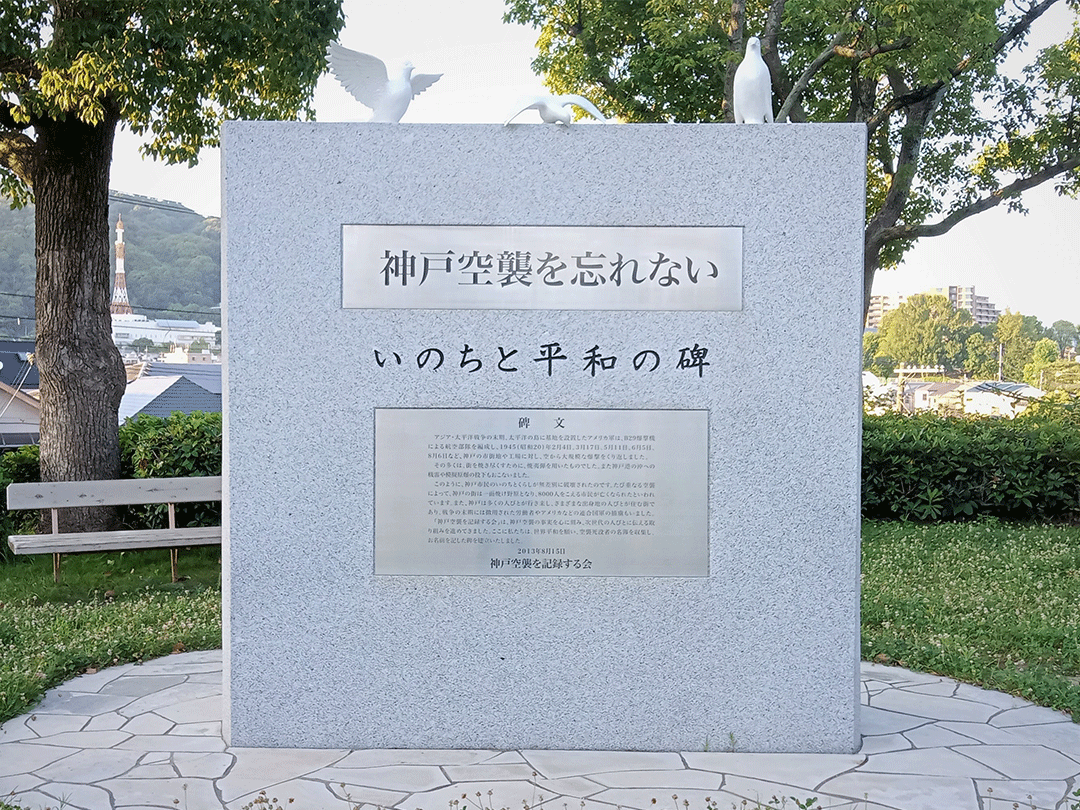
Cenotaph for the Kobe Air Raids erected in 2013 (Chuo Ward, Kobe)
In my classes at Kobe University, I introduce examples like this with the names of the places.
I think that this encourages students from the local area to wonder “why didn’t I know this until now?” and students from other areas to think about the war damage in their hometowns. If the high school one attended existed before the war, there may be records of student mobilization or memorials. Associating war damage with local place names brings the negative history of the past closer to home, making it feel as if it were about the students themselves. Recently, I feel that many students have started to think of war as a more immediate issue due to the outbreak of the War in Ukraine.
One of the most notable achievements of the Association for Documenting the Air Raids Damages in Kobe is the erection of the “Monument of Life and Peace”, which is the cenotaph for the Kobe Air Raids, in Okurayama Park, Chuo Ward, Kobe in 2013. The monument is engraved with the names of those who lost their lives in the air raids. They had been collecting lists of the causalities, and by collecting and publishing photographs in the Kobe Shimbun newspaper called for the city's cooperation to "engrave the names of at least those who had been identified”. The establishment of “Heiwa no Ishiji” (Cornerstone of Peace, in Itoman City, Okinawa Prefecture) in 1995 to engrave the names of people who died in the Battle of Okinawa had a significant impact on this. Creating a space to visualize the damage caused by the air raids in the form of the memorial monument is of great significance. Additional inscriptions are made every other year.
The reality of the “occupation period” does not follow the chronological entries
You are especially researching the occupation period of Japan. What was the condition of Kobe at that time?
Professor OSA:
After the defeat in August 1945, many Western-style houses, buildings, and port facilities in Kobe were seized by the occupation forces. The bay area, prefectural government offices, etc. became their bases and camps for operational units were set up in the area around where JR Sannomiya Station and JR Kobe Station are located now. Kobe University's auditorium, swimming pool, and other facilities in Rokkodai were confiscated, and the area where the Rokkodai second campus is now located was developed for the occupation forces’ family housing “Rokko Heights” at that time. They became the campus site for the comprehensive university later and were not returned until 1958. Japan's independence is said to have started with the enforcement of the 1952 Peace Treaty, but in reality, the occupation forces were replaced by the US military under the Japan-US Security Treaty and they continued to stay there. Periods such as “postwar” and “occupation period” are not as neatly delimited in fact as they are in the chronological entries.
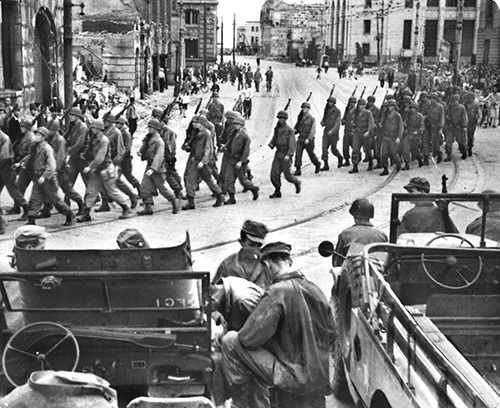
(Courtesy of the Kobe Shimbun)
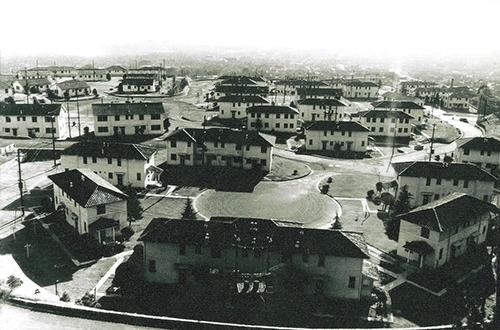
(Courtesy of the Kobe Shimbun)
One of the factors that confuse the unified image of the occupation period is the Korean War that began in 1950. The Port of Kobe became a base for the U.S. military during the Incheon Landing (Operation Chromite), and some Japanese sailors were drafted to the battlefield with their ships despite Article 9 of the Constitution, and some of them died. These facts have been revealed in recent years by the testimonies of the bereaved families and U.S. documents.
Regarding the occupation period, the records of the General Headquarters of the Supreme Commander for the Allied Powers (GHQ/SCAP) began to be made public in the late 1980s, and research on Japan-US relations in particular advanced. However, research on the local occupation, especially including the life histories of the people, finally took off in the 2000s.
In each prefecture, an organization of the U.S. military organization called a "Military Government" was placed. The civil affairs officers, who joined military organizations from the private sector, worked closely with Japanese prefectural government officials to oversee the implementation of occupation policy there. Kobe was unique in that it had not only the Hyogo Military Government, but also a US military organization called the “Kobe Base”. Previous research has revealed that it was responsible for the logistics of the US military in western Japan.
I hear that there are not many records of civilian life during the occupation.
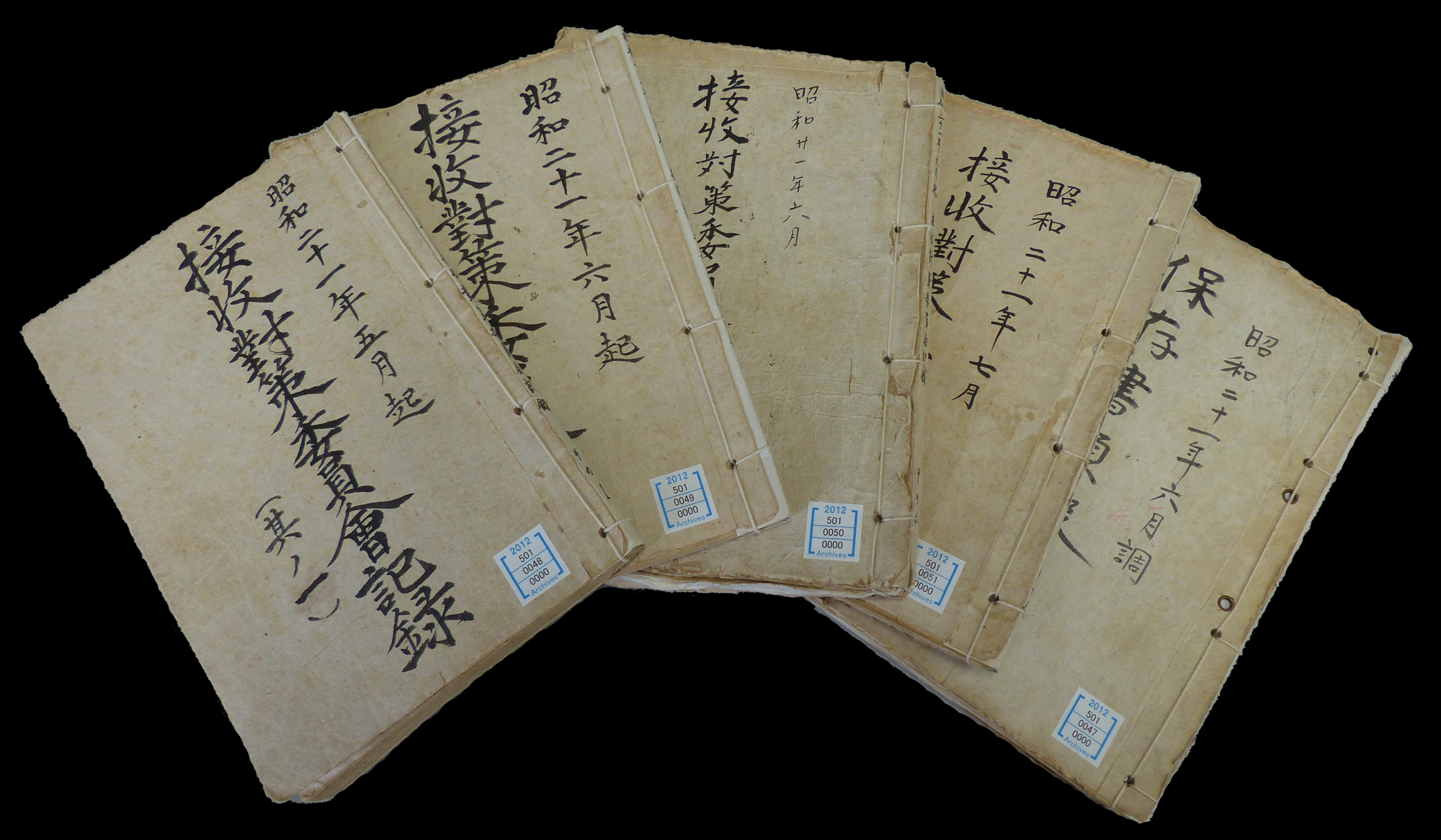
(In the collection of the Kobe University Archives)
Professor OSA:
The organization and release of Hyogo prefectural government official documents has been slow. Oral records and memories have not been consciously collected. The records are separated on August 15th, but the days of the war and the occupation were connected, and people's diaries and letters from evacuated children at the time do not end on August 15. They returned to their hometowns from evacuation sites in October and November nationwide, so such records also convey the atmosphere of the early occupation period.
At Kobe University, there are documents that show the situation where the pool was seized and the swimming club members were dissatisfied, or they had to get permission from Kobe Base to hold a graduation ceremony in the auditorium. Such dissatisfaction from the citizens’ side is not left in the official documents of the administration, but it is necessary to collect fragments.
Public records show that Kobe was also a gathering area for Korean residents in Japan and many settled foreigners, including overseas Chinese, and that it was one of the areas that was under the watchful eye of the occupying forces. In other words, from the viewpoint of the occupation forces and the Japanese administration, it was a “multicultural society in a negative sense”.
Because of this, records on the number of people and incidents at that time are biased, and therefore we need to consciously collect records and life histories from the citizen's perspective . However, the way postwar Japanese citizens collected records has a nationalistic aspect. There is a wealth of experiences and records of Japanese, but it has not been matched with those of Koreans and overseas Chinese living in Japan. It is necessary to check the experiences and records of the Japanese people of the time, including those of the occupation period, against the experiences and records of Korean residents and overseas Chinese living in Japan. That is our challenge for the future. Kobe has been an area with cultural diversity since before the war.
Redrawing History from Diverse Perspectives
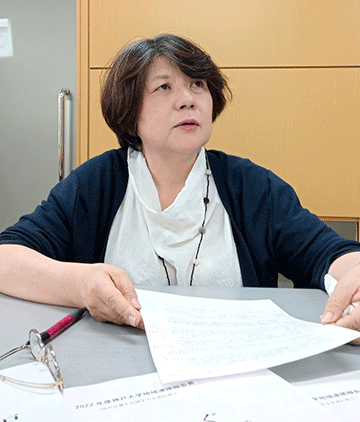
It is necessary to look at the invisible history, isn't it?
Professor OSA:
Yes. In Kobe, during the occupation, there was the "Hanshin Education Struggle", a movement against the GHQ and the Japanese government's order to close Korean schools. This was a requirement of daily life, but the occupation forces violently eliminated the movement by declaring a "state of emergency”. Even though the occupation was not a direct rule but an indirect one, Military suppression was enforced and very significant. However, such events have become a partial history and have not been captured within the framework of the “occupation period.” In the 1950s, the Japanese mainland was full of U.S. military bases. This period after the occupation is closely connected to the postwar urban space. I think it is necessary to re-examine history in a form such as “early postwar history.”
Kobe is also an appropriate area to redraw the occupation period, especially when considering future multicultural societies.
You also specialize in gender history. How should we look at the history from a gender perspective?
Professor OSA:
In the field of archaeology, display panels such as “men hunt and women cook” have been criticized for leading to the fixation of gender role images such as “men do this” and “women do that” from 10,000 years ago, which is because it’s just an imaginary picture. In recent years, many traces of women's participation in the hunting of large animals have been discovered at the level of archaeological remains, and this has led to a worldwide reassessment. In some cases, two buried individuals who were thought to be husband and wife because of the belief that "a buried man and woman are husband and wife" were turned out to be siblings as a result of verification. The prejudice of researchers who are unaware of gender bias runs the risk of misreading the historical picture.
The internet is full of gender-biased information and we need to be especially careful when looking at history. Even in the air raids records preservation movement since the 1970s, we see blatant descriptions of the women as subsidiary even though they were actually involved in the activities, and of the men in positions of power as the main actors. In my research on the air raids and occupation period, I think that I can contribute also to a new era image through a gender perspective. I plan to compile the results of my research into a book.
Resume
| March 1985 | Graduated from the College of Letters, Ritsumeikan University, with a bachelor’s degree in Japanese History |
| March 1988 | Completed Master’s Program in Japanese History at Graduate School of Literature, Okayama University |
| March 1991 | Withdrawal with Completion of Course Requirements from the Doctoral Program of Japanese History, Graduate School of Letters, Ritsumeikan University |
| April 1994 | Full-time lecturer at Faculty of Law, Ritsumeikan University |
| October 1997 | Doctoral degree by thesis only (Literature) from Ritsumeikan University |
| April 1998 | Associate Professor at Faculty of Foreign Studies, Kobe City University of Foreign Studies |
| October 2010 | Professor at Graduate School of International Cultural Studies, Kobe University |





